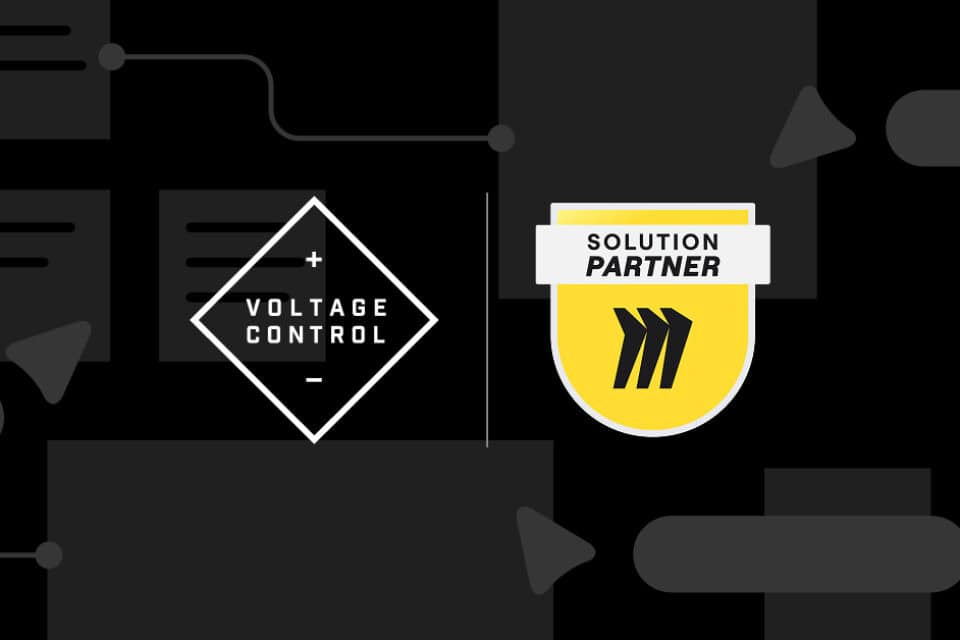How We Grow Together
What does it mean to truly practice together? At Voltage Control, we believe that facilitation isn’t just a skill that can be mastered in isolation; it’s a collective pursuit. That’s why we call our community Facilitation Lab. The word “Lab” is no accident—it’s a nod to experimentation, mutual support, and a safe space where learning happens in real time. In a lab, things might fizzle, spark, or explode, but you’re never alone when it does. That shared commitment to exploration builds the kind of trust that enables deep, transformational growth.
Collective practice is about more than polishing facilitation techniques—it’s about building the muscle to adapt, to hold space, and to grow alongside others. It’s a culture of curiosity where people show up, not just to get it right, but to try it out. Facilitators at every stage—from aspiring to seasoned—gather at our meetups not to show off but to get better, together. And in that space, there’s freedom to stretch boundaries, push comfort zones, and play with new tools in ways you rarely get to do in client sessions or corporate meetings.
There’s a kind of magic that happens when you practice with peers who are also committed to learning. Vulnerability becomes a strength. Reflection becomes a shared act. And you stop thinking of practice as preparation for “the real thing”—because this is the real thing. The community becomes your classroom. Over time, those shared experiences build a library of insight that we draw from in moments of challenge and growth.
What Collective Practice Really Means
When we say “collective practice,” we’re not just referring to a group setting. We mean engaging in an active, live environment where each person is simultaneously learning and contributing to others’ learning. In our Practice Playgrounds, you might be leading a breakout as the facilitator one moment, and embodying a skeptical participant the next. That fluidity is part of the learning. You’re always one pivot away from a new perspective.
This kind of environment creates space for not only skill development but self-awareness. We’ve seen it function as a sort of litmus test—who’s willing to show up in public and practice with a bit of edge? Who’s ready to explore the less comfortable, more emergent aspects of facilitation? It reveals who’s confident, who’s adaptable, and who’s curious enough to keep going. And that’s often the truest mark of a great facilitator: curiosity and humility.

Collective practice also flips the script on expertise. You might enter a session thinking you’re there to help someone else, only to realize halfway through that your biggest insight came from playing the role of participant. There’s a particular kind of empathy that forms when you experience both sides of the room. It sharpens your ability to read group energy, respond in the moment, and build workshops that meet people where they are.
It’s also worth noting that the rhythm of collective practice builds endurance. The more you participate, the more facilitation feels like a natural, fluid way of being rather than something you have to prep for or put on. It’s less of a performance and more of a practice in presence.
The Rise of Participant Practice
A fascinating thread that’s emerged recently in our Labs is the idea of participant practice. That is, how can someone get better at facilitation—even if they’re never “in charge” of the meeting? In one North America session, we heard from someone discovering the magic of facilitation while stuck in a non-leadership role. Her story sparked a reflection: How do we show up as excellent meeting participants?
Being a “magical meeting participant” isn’t about taking over. It’s about modeling curiosity, asking great questions, and supporting the flow of the session. It means noticing dynamics and finding ways to offer subtle assists—like that personal trainer who doesn’t lift the bar for you but gives just enough support to help you make the rep. That type of contribution can shift the mood of the room and unlock more productive conversations.
Leaders who adopt this mindset can shift their organizational culture, not by commanding the room but by creating space for others to step up. It’s a form of facilitation through participation—activating others by how you show up. It’s how cultures of collaboration are born. In many cases, it’s the seed of a long-term transformation.
The idea of participant practice also acknowledges that facilitation isn’t always about holding the marker. Sometimes it’s about holding the energy. The ability to sense when to lean in or hold back is a powerful form of emotional intelligence. And we’ve seen firsthand how those who embody this ethos gain influence and trust far beyond their title.
Cultivating Feedback Culture
At the heart of collective practice is feedback. Not the kind that’s buried in performance reviews, but real-time, practical, human feedback. Our go-to tool for this is the classic Plus/Delta—what worked and what could be improved. But the magic isn’t in the tool; it’s in the culture that surrounds it. The questions invite honesty, but the environment makes that honesty land with care.

In our redesigned Practice Playground format, we now offer additional practice roles—not just as facilitators, but as openers and closers too. And even though those segments aren’t formally debriefed, participants still crave that feedback. We’ve seen people linger after the session to exchange thoughts, ask questions, and reflect together. These spontaneous sidebars often become some of the richest parts of the experience.
What’s remarkable is how this feedback culture fuels a loop of continuous improvement. Participants leave with insights they can immediately apply, and facilitators walk away with a clearer sense of how they landed. And because it’s all framed as practice—not performance—feedback isn’t threatening. It’s welcomed. When people know they’re in a space that celebrates iteration, they’re more likely to take risks and stretch themselves.
We’ve even seen cases where someone who received tough but caring feedback one week returns the next with a dramatically improved approach. That kind of resilience, powered by community, is what makes collective practice so special.
Global Collective Practice
Between mid-April and mid-May, we launched one of our largest experiments in collective practice to date. In collaboration with Jake Knapp and his new book Click, we facilitated over 70 workshops around the world. Each event focused on practicing the Differentiators activity—a tool from the new Foundation Sprint—and the results were electrifying.
This global sprint wasn’t just about showcasing a new method. It was a real-time prototype of how distributed practice can build shared momentum. From San Francisco to Amsterdam, Austin to Toronto, facilitators and participants rolled up their sleeves and tried it together. People shared photos, stories, and lessons on social media. New faces joined the community. It clicked. And that shared momentum continues to ripple out.
We also saw the power of iteration in action. The original Easy Brew case study evolved with each city. In North America, we trimmed it down and added fictional competitors to reduce cognitive overload. Varsha expanded the options in Amsterdam with two new case studies. This layering of improvements is what collective practice looks like in action.
What started as a celebratory launch transformed into a collaborative design process. Each facilitator added their own touch, and together we shaped something more refined than any one of us could have created alone. That’s the hallmark of a thriving practice culture—distributed ownership and creative contribution.
Practicing Belonging
One of the simplest but most effective ways to warm up a room for collective practice is through connection—and the Common Denominator activity delivers every time. It’s fast, fun, and reveals shared traits you might not expect. We break people into small groups, task them with finding commonalities, and see who can find the most.
At first glance, it feels like a game. But look deeper, and you’ll see the scaffolding of collaboration forming. The activity builds pattern recognition, sparks laughter, and sets the tone for open, curious engagement. You’d be surprised how fast strangers feel like a team when they discover they’ve all traveled to the same country or have the same weird food habit.
We’ve run Common Denominator at regional Labs, at SXSW, and even as a delay tactic when sessions needed a time buffer. It’s versatile and always delivers. It also provides a fascinating window into group dynamics: which teams optimize for speed and strategy, and which ones go deep on nuance and connection? Both reveal something valuable.
We’ve noticed that how a group approaches Common Denominator often mirrors how they collaborate. Are they focused on getting the “right answers” or on getting to know one another? Are they competing or co-creating? These moments of play hold deep insight into how we work together.
Designed for Real Growth
Over the last year we’ve been listening to feedback and iterating on our process and have developed a V2 of the Practice Playground format. Version 2 drops the open space section where participants brainstorm growth edges. Instead, we come prepared with a specific method—like Differentiators from the Foundation Sprint—to practice. This small shift has had a huge impact.

It turns out that anchoring the session around a shared activity frees up cognitive load and allows more time for role play. Rather than trying to translate personal growth goals into facilitation challenges on the spot, participants can inject their challenges into the method itself.
We also added new framing: before jumping into practice, each group discusses where and how this method might show up in their work. What’s likely to go wrong? Where are the edge cases? This primes the group with scenarios to role-play, making the experience richer and more grounded.
The feedback? Overwhelmingly positive. People want more time to practice. More clarity. More structure. V2 delivers that, while still leaving room for creativity and self-discovery. And because the practice is live and iterative, even those new to the method can contribute meaningfully.
This format also reduces the cognitive overhead for facilitators leading the session. With a shared focus and clear agenda, it’s easier to guide the group and spot emergent learning moments. We’re seeing more confidence from new facilitators and deeper engagement from returning ones.
Graceful Authority & the Invitation to Practice
What emerges from this kind of ongoing, public practice is something we call graceful authority. It’s not command-and-control. It’s not about being the expert in the room. It’s authority earned through presence, empathy, and adaptability. You’re trusted not because you always know the answer, but because you’re willing to explore it with others.
Facilitators who thrive in collective practice spaces don’t posture. They co-create. They get better not in secret, but in public. And that’s the kind of leadership we need more of—in our organizations, our communities, and our world. In many ways, this is the future of leadership: collaborative, emergent, and shared.

So here’s your invitation: come practice with us. Join an upcoming Facilitation Lab meetup. Try Common Denominator with your team. Bring a method to your next meeting and let others try it on for size. The point isn’t perfection. It’s progress—together.
Whether you’re new to facilitation or a seasoned guide, there’s room to grow. And there’s no better way to do it than in community.
That’s the power of collective practice.


